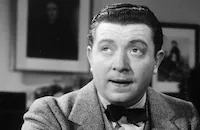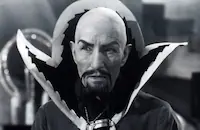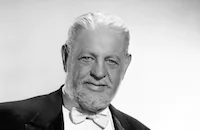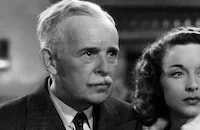Virginia City

Brief Synopsis
Cast & Crew
Michael Curtiz
Errol Flynn
Miriam Hopkins
Randolph Scott
Humphrey Bogart
Frank Mchugh
Film Details
Technical Specs

Synopsis
Toward the end of the Civil War, a nearly defeated South is in desperate need of gold to continue the fight. Hoping to help the Confederacy, Julia Hayne travels from Virginia City to Libby prison, called the "black hole of the Confederacy," with a proposal to make to the prison's commander, Vance Irby. Julia tells Vance that a group of sympathizers has raised $5,000,000 for the Confederacy, and asks his help to bring it out of Virginia City. With the consent of Jefferson Davis, Vance agrees, but before Vance can leave for Nevada, Kerry Bradford, a Union intelligence officer and prisoner at Libby, escapes and hears rumors of the shipment. With his friends, Marblehead and Olaf "Moose" Swenson, Kerry is dispatched to stop the shipment, and on the stagecoach bound for Virginia City, he meets Julia. The two fall in love, but once they reach Virginia City, Julia avoids Kerry, while Vance readies the gold shipment under the guise of an immigrant wagon train headed for California. When the two antagonists meet again, Kerry realizes that Vance has been sent to escort the bullion South. As Kerry closes in on the gold, Vance asks Julia to lure him into a trap, forcing her to choose between her love and her country. Julia chooses her country, and the gold train leaves town with Kerry as their prisoner. Along the trail, Kerry escapes and, left for dead after a fall from a cliff, he wires the Union forces for help. Meanwhile, plagued by a lack of water, the train continues on until the bandit John Murrell and his men attack, just when things look their bleakest. Kerry and his men ride to the rescue, but they are no match for Murrell's band, and Vance, mortally wounded, asks Kerry to see that the gold is used to rebuild the South. Kerry promises to do so and buries the gold in an explosion. In the morning, Murrell's men move in for the slaughter, however, Union reinforcements arrive just in time to save the train. When Kerry refuses to turn over the gold, he is court martialled and sentenced to die, but at the last moment Julia wins a pardon from President Abraham Lincoln and the lovers, like the country, are reunited.

Director

Michael Curtiz
Cast

Errol Flynn

Miriam Hopkins

Randolph Scott

Humphrey Bogart

Frank Mchugh

Alan Hale

Guinn Williams

John Litel

Douglas Dumbrille

Moroni Olsen

Russell Hicks

Dickie Jones
Frank Wilcox
Russell Simpson
Victor Kilian

Charles Middleton
Monte Montague
George Regas

Thurston Hall
Brandon Tynan
Charles Trowbridge

Howard Hickman

Charles Halton

Roy Gordon
Sam Mcdaniel
Bud Osborne

Harry Cording
Philip Morris
Lane Chandler
Henry Hall

Ed Keane
Trevor Bardette
Georgia Simmons
Claire Du Brey
Tom Dugan
Spencer Charters
George Guhl
Ed Parker
De Wolfe Hopper
Max Hoffman Jr.

Paul Fix

Ward Bond
Reed Howes
Norman Willis

Walter Miller

George Reeves
Shirley Mills
Albert Russell

Wilfred Lucas
Robert Homans
James Farley
Wedgwood Nowell
Davison Clark
Crew
George Amy
Robert Henry Buckner
Robert Fellows
Leo Forbstein
Hugo Friedhofer
Oliver Garretson
Jo Graham
Robert Haas
H. F. Koenenkamp
Frank Mattison
Sol Polito
Francis J. Scheid
Sherry Shourds
Ted Smith
Max Steiner
Jack L. Warner
Perc Westmore

Photo Collections
Videos
Movie Clip



Trailer
Film Details
Technical Specs

Articles
Virginia City
Though not as strong as Dodge City, a Flynn/Curtiz picture from the year before (and certainly not as strong as other collaborations like Captain Blood, 1935, or The Adventures of Robin Hood, 1938) Virginia City was still a lavishly produced western which proved quite profitable for Warner Bros. The production's backstory, however, is arguably even more entertaining than the film!
Flynn plays a Union officer who escapes from a Confederate prison and then tries to prevent a Nevada gold shipment from reaching the Confederate army. Humphrey Bogart is severely - though amusingly - miscast as a half-breed bandit named John Murrell (!) with a Spanish accent and a pencil-thin moustache, and Miriam Hopkins is also out of her element as a saloon singer who's really a Southern spy. Randolph Scott, on the other hand, playing the Southern prison commander and orchestrator of the gold shipment, seems a natural for the part.
Ironically, the Randolph Scott role was originally conceived for Flynn. And Hopkins's role was developed with Ann Sheridan in mind, who undoubtedly would have been a better fit. In fact, Virginia City was plagued with script, production and personnel problems all along. Shooting began without a finished script, angering Flynn, who complained unsuccessfully to the studio about it. Flynn disliked the temperamental Curtiz and tried to have him removed from the film. Curtiz didn't like Flynn (or costar Miriam Hopkins) either. And Humphrey Bogart apparently didn't care for Flynn or Randolph Scott! Making matters worse was the steady rain that fell for two of the three weeks of location shooting near Flagstaff, AZ. Flynn detested rain, and was physically unwell for quite some time because of it.
As Peter Valenti has written, "Errol's frustration at the role can be easily understood: he changed from antagonist to protagonist, from Southern to Northern officer, almost as the film was being shot. [This] intensified Errol's feelings of inadequacy as a performer and his contempt for studio operation."
Two Trivia Notes: Yakima Canutt, one of Hollywood's most famous stuntmen, repeats his Stagecoach (1939) stunt by jumping from horse to horse on a speeding wagon. And Virginia City is not actually a sequel to Dodge City, even though Dodge City ends with Henry O'Neill ordering Errol Flynn to Virginia City!
Producer: Robert Fellows, Hal B. Wallis
Director: Michael Curtiz
Screenplay: Robert Buckner
Cinematography: Sol Polito
Film Editing: George Amy
Art Direction: Ted Smith
Music: Max Steiner
Cast: Errol Flynn (Capt. Kerry Bradford), Miriam Hopkins (Julia Hayne), Randolph Scott (Capt. Vance Irby), Humphrey Bogart (John Murrell), Frank McHugh (Mr. Upjohn), Alan Hale (Olaf "Moose" Swenson).
BW-119m. Closed captioning.
by Jeremy Arnold

Virginia City
Virginia City - Errol Flynn Stars in the 1940 Western VIRGINIA CITY on DVD
Robert Buckner's script makes a claim for authenticity in an up-front title card, but the events of this wooly Civil War tale are pure Hollywood corn, complete with a dashing hero, a Confederate Mata Hari, buffoonish sidekicks and noble North-South sentiments. Randolph Scott is comfortable in a supporting role, while Miriam Hopkins and a woefully miscast Humphrey Bogart were apparently as unhappy with the demanding director Michael Curtiz as was Errol Flynn. Just a year later Flynn would rebel against Curtiz and refuse to work with him again.
Synopsis: Newly escaped from a Confederate prison camp, Union officer Kerry Bradford (Errol Flynn) convinces the Federal Army brass that he needs to depart immediately for Virginia City, Nevada. Although the South would appear to be beaten, Confederate sympathizers in that mining town could change the course of the war by shipping millions in gold to the rebel president Jefferson Davis (Charles Middleton). En route with his lunkish but loyal cohorts Olaf "Moose" Swenson and "Marblehead" (Alan Hale & Guinn "Big Boy" Williams), Kerry repulses an attack by Mexican bandit John Murell (Humphrey Bogart). He also falls for the charming, secretive Julia Hayne (Miriam Hopkins). In Virginia City Kerry discovers that Julia is really a popular dance hall singer. The Confederate agent organizing a shipment of gold bullion is revealed to be Vance Irby (Randolph Scott), the former commandant of the rebel prison camp. Kerry vowed that if they ever met again, he'd make Irby pay for the treatment of the prisoners.
The engaging Virginia City plays fast and loose, with history and simple credibility. Actual Confederate efforts to avail themselves of frontier gold from Colorado were a disaster, and the notion of 'sneaking' a wagon train of Au through 2000 miles of Union territory was never very practical. True, Vance Irby's expedition doesn't get very far, but the whole idea is as fanciful as Auric Goldfinger knocking off Fort Knox.
History aside, this Flynn vehicle shapes up as fast moving, escapist western fare. Official Flynn sidekick Alan Hale and the infantile Guinn "Big Boy" Williams provide hayseed comedy relief, shooting their guns as if swatting flies and tripping over one another while Flynn does the heroic heavy lifting. Familiar Warners player Frank McHugh is in for a couple of scenes as a Donald Meek-like stagecoach companion.
Miriam Hopkins handles the role of femme fatale well enough, although audiences surely compared her unfavorably with Flynn's presumed ideal costar Olivia de Havilland. An unlikely adventuress-Southern Belle, Hopkins' Julia Hayne seems heavily influenced by the massive success of Gone With the Wind. The princely Randolph Scott need only stand straight and say his lines to make his noble Southerner role work; the movie bends over backwards to pretend that personal honor can heal North-South differences. When the movie should by all rights be finished, it continues with a court-martial scene in which Flynn rather unconvincingly tells his superiors that he was right to let $5 million slip out of Yankee hands. Some things do require a Presidential pardon!
As charming as ever, Errol still seems an odd fit strutting amid the sagebrush, wearing tailored suits and some of the tightest slacks West of the Pecos. He makes remarks about being an Irishman with anti-English sentiments (what? Someone call Charles Higham!), yet also alludes to serving with the Brits in Afghanistan.
Virginia City ultimately takes itself a bit too seriously for its own good. Little Dickie Jones buys the farm when a wagon loaded with tons of gold runs him over. As the desperate rebel gold convoy naturally grabs our sympathy, we never know which side we should be on. Further confusing things is Humphrey Bogart's bizarre Mexican bandit, Murell. Bogart's accent comes and goes in a laughable characterization that's only a little less absurd than his zombie lab assistant in The Return of Dr. X. After seeing these two films, it takes little effort to imagine Bogart staring in a mirror and wondering if his career was doomed. Happily, The Maltese Falcon and major stardom were only a few months away.
Director Curtiz crams plenty of action into the story, giving stuntman Yakima Canutt the opportunity to do his under-the stagecoach trick as well as several murderous-looking horse falls. A tumble down a steep ridge sends one unlucky horse (who may have been tripped) flying end-over-end like a puppy in a clothes dryer. The horse gets up and is apparently unharmed, but we wouldn't be surprised to be told that it dropped dead one frame after the camera cuts away. Michael Curtiz had a reputation for being almost as rough on horses as he was on actors, and ASPCA sympathizers will definitely not be amused.
Warners' DVD of Virginia City far surpasses the quality of old TV prints; a new digital transfer brings out every detail of Fred Koenecamp and Byron Haskin's special effects. Watch the scene where Humphrey Bogart leaps from a bridge into a river, and notice that he transforms from a miniature to live action while crossing behind matte paintings of overhanging tree branches. We also can pick out Ward Bond and George Reeves in bit roles.
The release is given the full "Warner Night at the Movies" treatment, including a newsreel and two cartoons. Garish Technicolor adorns a grating kiddie musical version of Cinderella as well as a tribute to Clara Barton of the American Red Cross. A making-of featurette for The Charge of the Light Brigade is also included.
Virginia City is at this time available only as part of the Errol Flynn Westerns Collection, with Montana, Rocky Mountain and San Antonio.
For more information about Virginia City, visit Warner Video.To order Virginia City, go to TCM Shopping.
by Glenn Erickson
Virginia City - Errol Flynn Stars in the 1940 Western VIRGINIA CITY on DVD
Quotes
Trivia
Notes
According to news items in Hollywood Reporter, this picture was filmed on location at Sherwood Lake, CA and near Victorville, CA. Modern sources state that scenes also were shot at Painted Desert in Arizona. Photographer Sol Polito, editor George Amy, screenwriter Robert Buckner, director Michael Curtiz and star Errol Flynn also worked on 1939's Dodge City together. Errol Flynn and Martha Scott starred in a Lux Radio Theatre version of this story on May 26, 1941.

Miscellaneous Notes
Released in United States 1940
Released in United States on Video May 20, 1992
Released in United States 1940
Released in United States on Video May 20, 1992














